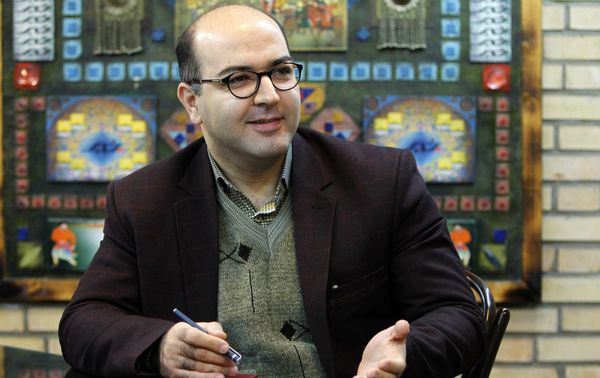|
إستماع
Getting your Trinity Audio player ready...
|
Iran’s Foreign Minister Hossein Amir Abdollahian (R) while attending for speaking with media with his Saudi counterpart Faisal Bin Farhan, after an official meeting in Tehran’s Foreign Ministry building, June 17, 2023.
Heated debates in Iran continue about Tehran’s ties with Riyadh following an incident during the recent visit of Saudi Foreign Minister Prince Faisal bin Farhan.
The controversy ensued when at the conclusion of talks between bin Farhan and his Iranian counterpart on June 17, the venue of their joint press conference was suddenly changed.
While the Iranian foreign ministry spokesman and the state television insisted that changing the room was “due to a technical problem,” Iranian reporters on social media insisted that the Saudi delegation refused to sit in a room where a big portrait of former IRGC Qods Force Commander Qassem Soleimani was posted on the wall.
Foreign policy analyst Diako Hosseini wrote in a tweet: “The Foreign Ministry should have been intelligent enough to predict the Saudis’ sensitivities. Now that the ministry was not intelligent enough, the minister should have cancelled the news conference.”

Foreign policy analyst Diako Hosseini
An Iranian commentator in Paris, Mohammad Javad Akbarin tweeted: “In 2019 Soleimani wanted to bring Syrian Leader Bashar Assad to a meeting with Supreme Leader Ali Khamenei to attract media attention. Instead, it was [foreign minister]Zarif’s threat to resign that became the day’s news. Now, the general’s picture has undermined all the achievements of the visit by the Saudi delegation. Dead or alive, Soleimani has always brought about a loss for the country’s diplomacy and national interests.”
Zarif was apparently caught off guard when Assad showed up in Tehran and was not even invited to the meeting with Khamenei.
At the same time, prominent Saudi columnist Mohammed Alsulami wrote in a series of tweets in both Arabic Persian that “Trust between the two countries is fragile and comments made by some political figures close to Iran shows how difficult is rebuilding mutual trust.” He further called on Iranians to avoid using sarcastic language about the Iran-Saudi ties as the Saudis are not interested in “factional rivalries in Iran.”
At the same time, foreign policy analyst Ali Bigdeli told Nameh News website in Tehran that “Not all the problems between Tehran and Riyadh will be solved with a visit to Tehran by bin Farhan. He added that “Some Iranian officials have said that America’s hands will be cut off from the Middle east following the agreement between Iran and Saudi Arabia, but this is not true.”

Foreign policy analyst Ali Bigdeli
He added: “We still do not have full diplomatic relations with Saudi Arabia. The Iranian ambassador to Riyadh has still not received his credentials from the King.” He said in another part of his interview that Saudi promises of investing in Iran may not materialize as long as US sanctions against Iran are in place.
Bigdeli argued that Iran should follow a dynamic policy like Saudi Arabia and maintain healthy ties with both East and West rather than pinning all its hopes on the East.
Meanwhile, moderate news website Entekhab wrote in a commentary that two years after President Ebrahim Raisi declared Iran’s policy of expanding ties with China, Iran’s “looking east policy” has not been as successful as Saudi Arabia’s relations with China.
The website wrote that despite signing a 25-year cooperation agreement with China, Iran’s share of trade with Beijing only amounted to half a percent of China’s international trade in 2022.
Generally, the total trade volume between Iran and China was less than $16 billion while Saudi Arabia maintained an annual trade of $106 billion with China in 2022, Entekhab maintained.

